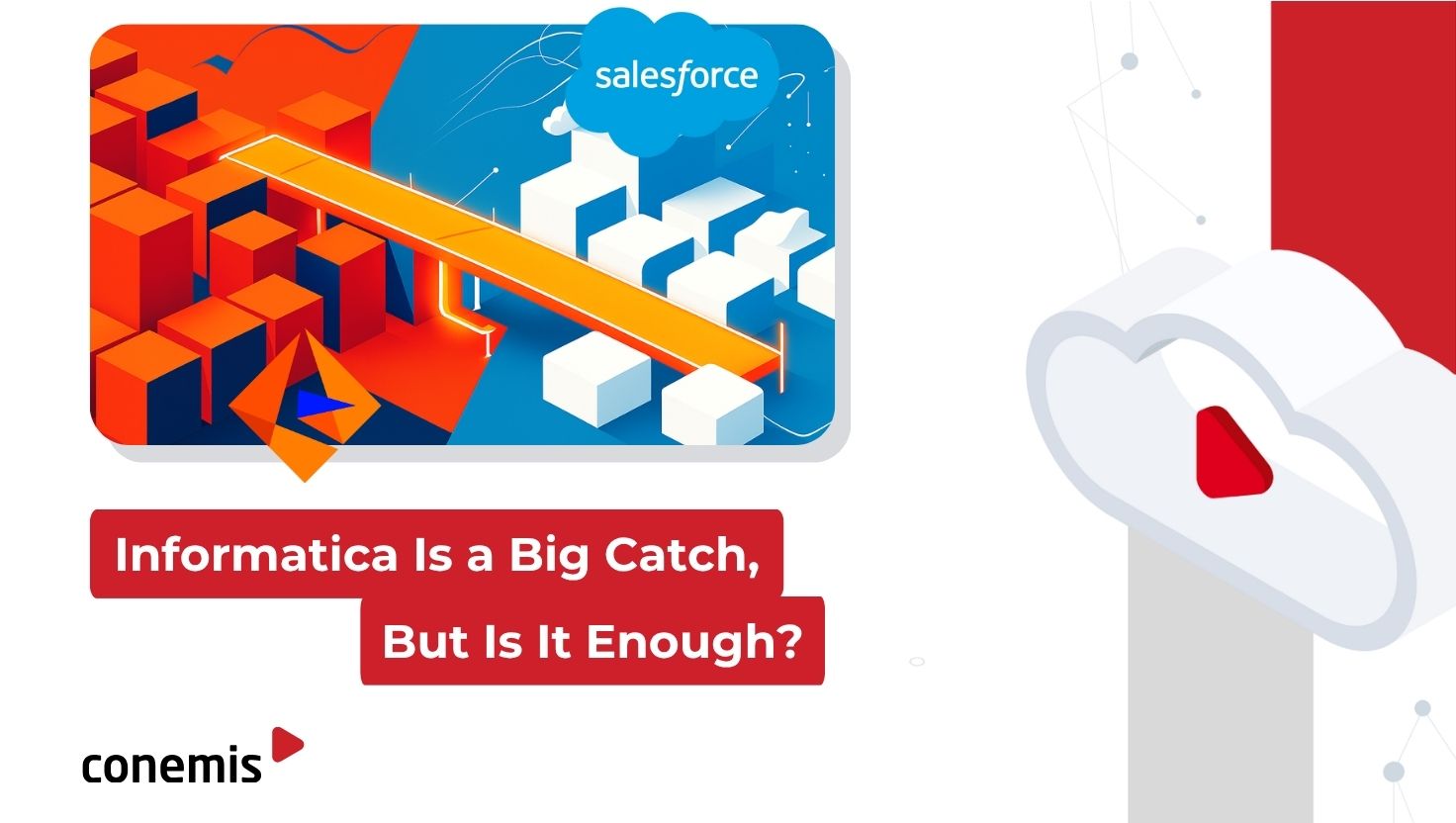Contact
Privacy
Legal Notice - Impressum
Career
News

Salesforce’s $8 billion acquisition of Informatica made waves when it was announced. Headlines focused on the price tag, the rationale, and what this move really means for Salesforce. Then as news cycles tend to go, the story moved on.
Among the hot takes, what’s been overlooked is what this move doesn’t mean for Salesforce, because this deal isn’t just about Informatica. It’s a spotlight on the holes that are still left unfilled, and the tech community is noticing.
Over the past few years, Salesforce has quietly assembled an arsenal of data capabilities: MuleSoft for integrations, Tableau for analytics, a Customer Data Platform (CDP) for personalization, and now, Informatica for data management and MDM. But assembling tools is one thing. Making them seamlessly work together is another.
While headlines focused on the $8B price tag, the real story lies in what this means for Salesforce’s long-term data integration and cloud-native architecture strategy
On paper, the deal makes sense. Informatica brings decades of enterprise credibility and technical muscle in core data functions:
It’s a workhorse platform with deep roots in Fortune 500 IT stacks. With this acquisition, Salesforce adds robust governance capabilities to its growing data empire, critical ingredients for enabling AI, personalization, and multi-cloud customer experiences.
Despite Informatica’s enterprise credentials – and a moderate revenue multiple – investor and analyst reactions were cautious at best. Why? A few reasons stand out:
What’s more, the very philosophies of the two platforms seem to be misaligned.
On a technical level, this deal represents more than an acquisition; it’s the clashing of fundamentally different data ideologies.
As conemis sees it, this deal spotlights a deeper architectural tension, one that’s not about picking sides, but about making opposites work together. Salesforce champions cloud-native agility, while Informatica still carries a legacy of batch-driven, on-premise master data management (MDM), which reveals a juncture in digital transformation.
From our point of view, this doesn’t have to be a clash; it’s an opportunity. Enterprises have a choice. And, for quite some time, the choice may be continuity between systems that are built decades apart.
That’s where we see the relevance. In the practical question of how these worlds interoperate: how legacy MDM meets modern CRM, how batch and real-time sync work best, how governance can scale across both. Because in the end, it’s not just about having data platforms available, it’s about activating them.
To understand why Salesforce bought Informatica, and where it might go next, we need to zoom out. Over the past half-decade, Salesforce has quietly assembled a suite of powerful data capabilities, each addressing a different layer of the enterprise stack:
On paper, that may seem like a full-stack play: ingest, integrate, activate, visualize but scratch the surface, and one thing becomes clear. Salesforce doesn’t yet have the architectural glue to make these components function as one.
This isn’t a matter of adding one more tool. What’s missing is the infrastructure glue, the connective tissue that brings coherence, scalability, and operational flow to a stack that’s grown through acquisitions. Here’s what still needs to be addressed:
Each of Salesforce’s tools brings power in isolation, value creation comes from integration, and integration only works when the data itself is unified, clean, and context aware.
The $8B Informatica acquisition may be Salesforce’s largest data deal to date, but raw scale alone doesn’t guarantee progress. Informatica brings decades of enterprise trust and a significant on-prem footprint, much of which relies on legacy architecture, batch-oriented workflows, and hardware-dependent systems built well before the cloud era. According to Informatica’s Q1 earnings report:
Modernization means shifting these legacy systems toward Salesforce’s vision of cloud-native integration and real-time data, often powered by MuleSoft. This transformation isn’t plug-and-play; it is a complex digital transformation that must preserve continuity and data integrity along the way.
This story resonates with us.
This is because we’ve worked closely with organizations navigating complex digital transformations. Shifting from batch-heavy, IT-centric MDM systems to cloud-first natively integrated architectures focused on unified customer profiles.
We help align complex business logic, preserve mission-critical rules, and unify disparate systems that were never originally designed separately, making them ready for an AI-first future.
One principle to keep in mind in all these cases: be careful of over-engineering multi-layered integration solutions, especially when several integration products are in place. Sometimes, the most effective and cost-efficient solution both during initial implementation and over the long term comes from an honest consolidation at the core. Instead of “activating” and synchronizing multiple data silos, it is sometimes best to clean up and consolidate them into one.
As Salesforce continues to expand and evolve its ecosystem that bridges legacy and cloud environments, we believe that data migration will become foundational for the necessary data hygiene for an AI-ready future.
As the Salesforce ecosystem grows more complex and data strategies evolve, the challenge of modernizing legacy systems while embracing AI and cloud-native technologies becomes ever more critical.
How will your organization bridge the gap between traditional data architectures and the future of real-time, intelligent data management?
✅ If you’re navigating data consolidation, AI adoption, or cloud transformation within Salesforce, we invite you to connect, share insights, and explore the evolving landscape with us.
✅ Follow us on LinkedIn for the latest perspectives and updates or reach out to discuss how these trends can impact your data journey.
The future of data isn’t just about tech, it’s about thoughtful, seamless transformation.